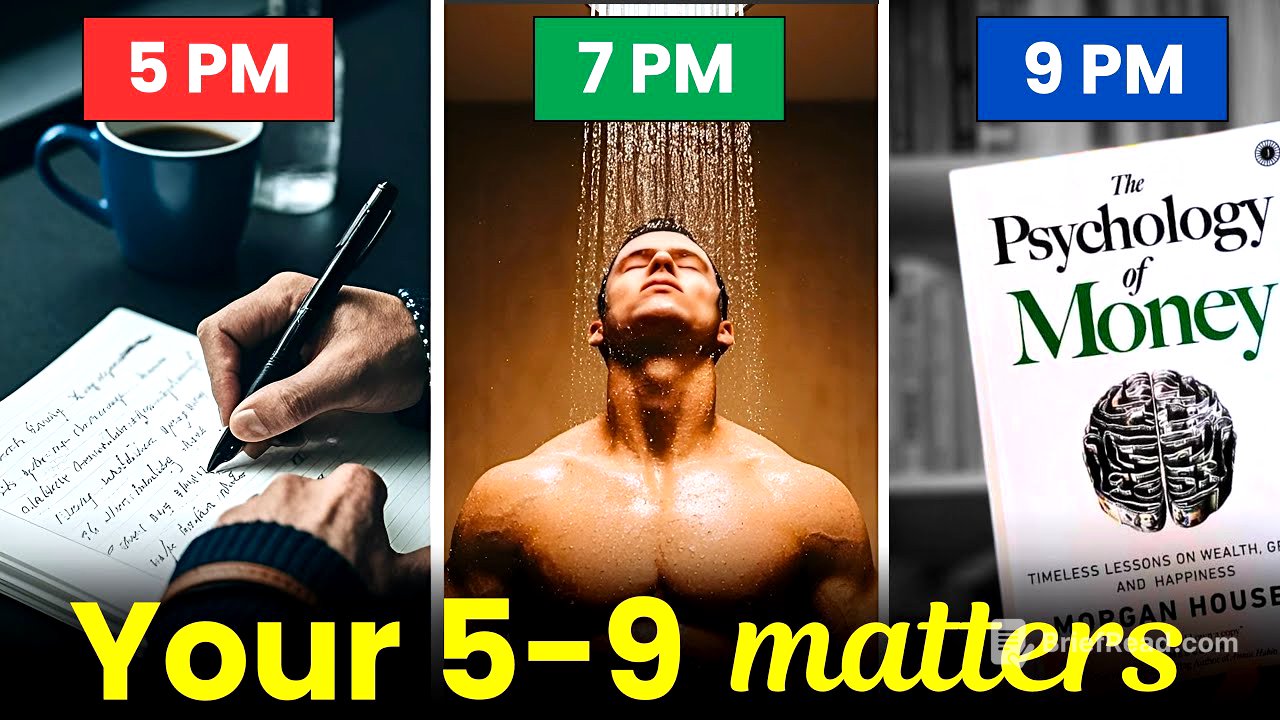TLDR;
This video discusses strategies for reclaiming your evenings from distractions and aligning them with your goals. It emphasizes understanding how tech companies design products to capture your attention, and then provides actionable techniques to counteract these influences. The core strategies involve making desired habits more obvious, attractive, easy, and satisfying, while making undesirable habits invisible, unattractive, difficult, and unsatisfying. The video also highlights the importance of environment and mindset in shaping habits and achieving goals.
- Understanding attention-grabbing tactics used by tech companies.
- Implementing strategies to make desired habits more accessible and appealing.
- Removing distractions and obstacles that hinder productivity and well-being.
- Leveraging the power of environment and mindset to reinforce positive habits.
Introduction: Reclaiming Your Evenings [0:00]
The video starts by contrasting two individuals: one who productively uses their evenings for self-improvement and family time, and another who spends them passively consuming content on their phone. The video aims to provide viewers with strategies to control their evenings and progress towards their goals, rather than falling into unproductive habits.
Understanding Attention Economy: How Tech Companies Capture Your Time [1:13]
The speaker introduces Mr. Kaba, a former head of growth at Instagram, to illustrate how social media platforms are engineered to maximize user engagement. Mr. Kaba observed that while users initially follow celebrities, they eventually find more value in content from their friends. The speaker explains that data engineers and product managers are highly skilled at designing features to keep users engaged for as long as possible, using examples like the introduction of stories on Instagram, which significantly increased user retention. The goal of these platforms is to consume as much of your time as possible.
Make It Obvious: The Amsterdam Airport Experiment [4:45]
The video introduces the "Make It Obvious" rule using the example of Amsterdam's Schiphol Airport, where painting a fly in urinals reduced spillage by 80%. Similarly, a school cafeteria increased healthy food consumption by placing healthy options at eye level. To control evenings, the video suggests placing items related to desired habits, like books or gym clothes, in plain sight to trigger the cue-action-reward cycle in the brain, steering you away from distractions.
Addition by Subtraction: Streamlining Your Environment [6:22]
The video introduces the concept of "addition by subtraction," inspired by Japanese electronic manufacturers in the 1970s who improved efficiency by removing unnecessary tools and distractions from the workspace. Applying this to personal life involves removing physical and mobile distractions. The speaker suggests removing unhealthy foods from sight and using apps like "Minimalist" to make phone screens black and white and hide colored icons, reducing screen time by making the phone less visually appealing. The goal is to create a "one-time effort, recurring reward" system, where a single action leads to continuous benefits.
The Power of Environment: The Astronaut Study [8:52]
The video emphasizes the importance of environment by citing a study at MIT where a disproportionate number of students in a robotics class became astronauts. This highlights how surrounding yourself with like-minded individuals can significantly influence your goals. The speaker stresses that choosing the right environment and friends is crucial for achieving your aspirations, even more so than other self-improvement strategies.
Mindset and Habits: The Harvard Shake Experiment [10:12]
The video discusses the impact of mindset on habits, referencing a Harvard experiment where participants were given shakes labeled with different calorie counts, but all shakes actually contained the same amount. The participants' hunger hormones reacted based on the label they were given, demonstrating how associating emotions with activities can reinforce habits. The speaker suggests associating positive emotions with desired habits, like feeling accomplished after reading or working out, to strengthen those habits.
Summary: The Four Laws of Behavior Change [11:37]
The video summarizes the four laws of behavior change: make it obvious, make it attractive, make it easy, and make it satisfying. To break bad habits, the speaker advises reversing these laws: make it invisible, make it unattractive, make it difficult, and make it unsatisfying. The speaker recommends the Gag application for accessing books and series on psychology and habits in Hindi and English. The video concludes by encouraging viewers to share the video with those who may be wasting their evenings and to subscribe for more content.









